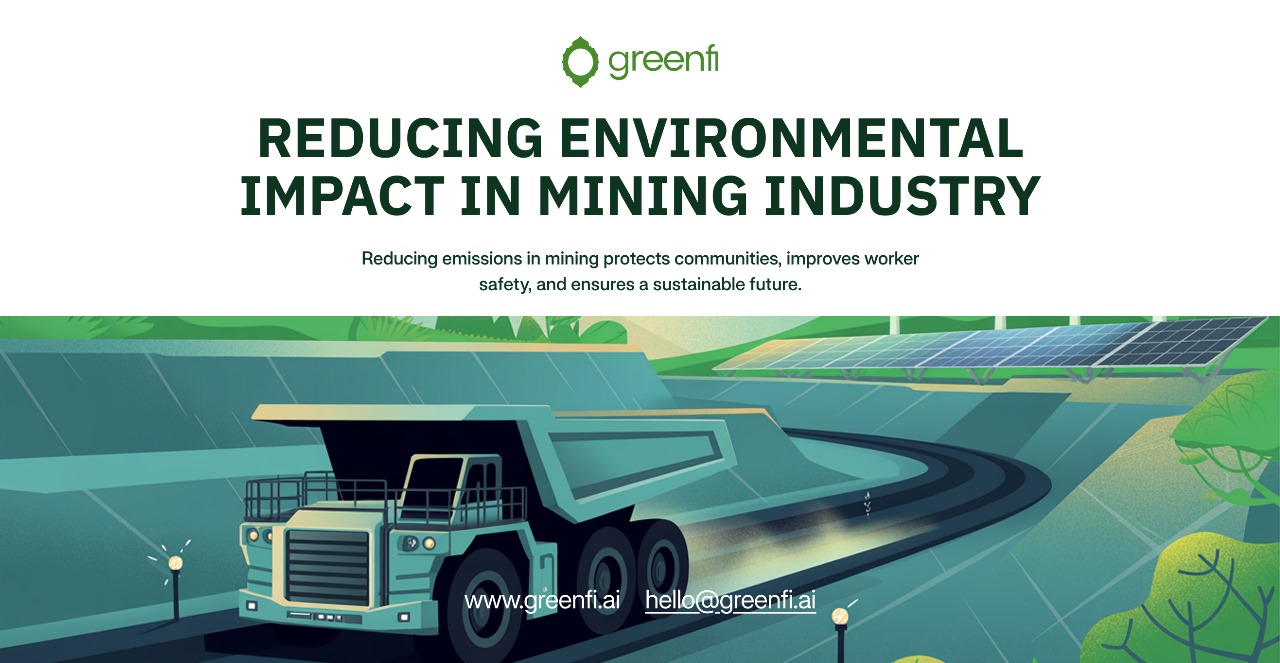Mining remains one of the most critical industries, providing essential raw materials for construction, technology, and energy. However, the sector is also a significant contributor to environmental degradation and social risks. From air and water pollution to unsafe working conditions, the impacts of mining extend far beyond extraction sites, making it a priority issue for regulators, communities, and investors.
Types of Mining and Their Risks
Different mining methods create unique challenges:
- Open-Pit Mining – Causes deforestation, dust emissions, and long-term land damage.
- Underground Mining – Increases risks of Underground collapse, flooding, and toxic gas exposure.
- Placer Mining – Often contaminates rivers and groundwater with mercury or other harmful chemicals.
Importance of Mining Industry in Economy
- Provides essential raw materials for infrastructure, manufacturing, technology, and energy.
- Generates employment and supports local and regional economies.
- Contributes to government revenues through taxes, royalties, and export earnings.
- Attracts investment and can stimulate infrastructure development.
ESG Perspective on Mining
- Environmental: Mining has significant land, water, and carbon impacts; responsible practices and innovation are key to reducing its footprint.
- Social: Creates livelihoods and community benefits, but must address health, safety, and rights of workers and local communities.
- Governance: Transparency, ethical practices, and regulatory compliance are crucial for long-term sustainability.
- Supports the energy transition by supplying critical minerals for renewable energy and clean technologies.
The Problems Caused by Mining
Mining operations generate a range of environmental and social issues:
- Air and Water Pollution – Dust from blasting, harmful gases from equipment, and untreated effluents entering rivers threaten ecosystems and public health.
- Regulatory and Legal Risks – Mining operations that fail to comply with environmental laws can face significant fines, legal action, and operational shutdowns, adding financial and reputational costs to the company.
- Health and Safety Risks – Workers are exposed to hazardous substances, loud noise, and unsafe machinery.
Why this is a Serious Risk
Mining risks are not short-term incidents, they leave lasting scars on people, ecosystems, and economies.
- Singareni Collieries Company Limited (SCCL), Telangana – Regulatory Fine Case – In 2022, the National Green Tribunal imposed a fine of ₹41.21 crores on SCCL for violating environmental clearance conditions and exceeding approved coal mining limits. Mining beyond the sanctioned area caused significant environmental degradation. This case highlights how non-compliance with environmental laws can lead to hefty fines, legal action, and long-term reputational damage. https://www.business-standard.com/article/current-affairs/com
- The 2019 Brumadinho dam collapse in Brazil – A failure in tailings management led to the release of millions of tons of toxic waste, causing nearly 300 deaths, destroying habitats, and inflicting billions of dollars in damages. Beyond the immediate tragedy, the disaster highlighted how lapses in governance and oversight can erase decades of community trust and investor confidence in a matter of hours. Brumadinho dam disaster source.com
These cases show why preventive measures and stronger ESG practices must be non-negotiable for mining companies.
Challenges in Controlling Impacts
Despite stricter environmental rules, companies face barriers in addressing mining’s impacts:
- High operational costs for cleaner technologies.
- Limited monitoring capacity in remote mining regions.
- Pressure to prioritize profits over sustainability goals.
Strategies for Mining Companies
To balance economic value with environmental and social responsibility, mining firms can adopt:
- Adopt Industry Best Practices – Follow recommendations and guidelines from recognized mining and environmental industry bodies to ensure sustainable operations, minimize environmental impact, and enhance social responsibility.
- Implement Real Time Monitoring – Deploy systems to continuously track emissions, dust, and water quality for compliance and early detection.
- Strengthen ESG Reporting – Align with frameworks like GRI, SASB, and TCFD to build transparency and investor confidence.
- Invest in Renewable Energy – Power mining sites with solar, wind, or hybrid systems to cut fossil fuel dependence.
- Responsible Waste Management – Ensure safe tailings disposal and recycle by-products to minimize contamination.
- Enhance Worker Safety Programs – Provide training, protective equipment, and regular health monitoring.
Conclusion
Reducing the impacts of mining is no longer just a compliance requirement, it is essential for protecting worker health, safeguarding communities, and maintaining a company’s license to operate. From air quality challenges to water contamination and waste management, companies must act with urgency and accountability. With GreenFi’s advanced monitoring systems, actionable ESG strategies, and transparent reporting capabilities, mining companies can take proactive steps to stay ahead of regulations, minimize impacts, and build a reputation as responsible industry leaders.
Contact us at hello@greenfi.ai to learn how GreenFi can help your mining operations monitor, manage, and reduce risks.









































